What color should the ceiling be painted – the same as the walls or a different color?
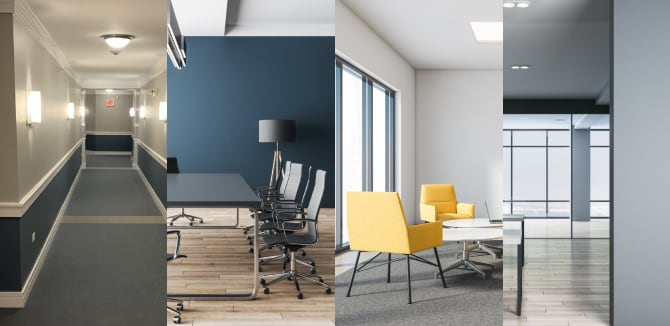
Taking on a painting project can be intimidating because there are so many questions that need to be answered if the project is going to be a success. For example, what color should you paint your ceiling? And, ceiling vs. wall color – should they be the same or different? These are probably the top two questions painting contractors get and they are important ones to answer before moving forward with your project.
There are several factors to consider when making the determination on paint colors for the ceiling and walls, as these represent the largest surface areas and the paint you choose can make them look smaller or larger depending on the color, but the color can also impact the mood of a room. There are actually different color combinations that can completely change the appearance of a room and there are even times when the ceiling and the walls in some rooms can share the same colors. We’ll get into all of that with the information below.
Check out the following to figure out which is best for you:
- Key factors to consider before painting your ceilings
- Four available options when choosing what color should you paint the ceiling
- Should the ceiling be the same color as the walls?
- Painting your ceiling and walls the same color
- Pros and cons of painting the ceiling the same color as the walls
- Should the ceiling be lighter or darker than the walls?
- Painting your ceiling a lighter color than the walls
- Pros and cons of a light ceiling with darker walls
- The examples of light ceiling and light walls combinations
- The examples of light ceiling and dark walls combinations
- Painting your ceiling a darker color than the walls
- Pros and cons of a dark ceiling with light walls
- The examples of dark ceiling and light walls combinations
- Should you paint your ceiling white?
- Examples of white ceiling with walls in different color combinations
- Best ceiling and wall color combinations for 2023
- Choose experienced ceiling painters in the Chicago area
Key factors to consider before painting your ceilings
It might seem that painting the ceiling white or off-white (eggshell) is the go-to move, and then choose a paint with pigment in it for the walls, but there are things to consider when choosing a color for the ceiling. For example, architectural features weigh heavily into the decision, as will the amount of natural light a room receives. Is there a specific decorating style you’re trying to achieve? Because that will factor in as well. There’s a reason the ceiling is sometimes called the “fifth wall,” so make sure you’re looking at all the variables before making a decision.
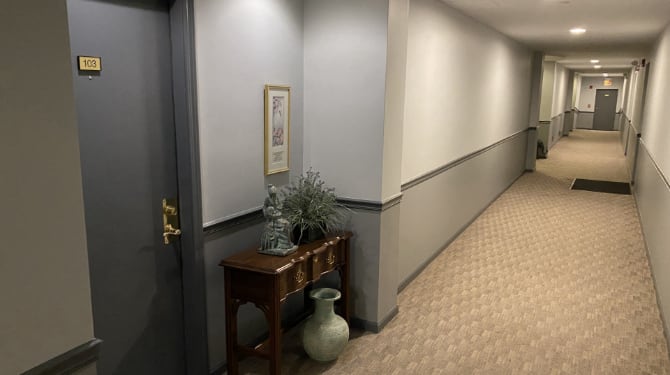
How large is your space?
Paint can really impact the perception of the size of a room. Let’s say you’ve got a room with high ceilings and you paint them white. This can make the room seem bland and bare. By toning that paint down to around three shades darker than the paint you use on the walls, you can make those ceilings seem lower and the bland and bare appearance goes away.
But what about small rooms? They will appear even smaller if you take the same approach, which is why painting contractors almost always recommend using a light color on the ceilings so the room seems larger and less cramped. There is also the finish component – using a glossy finish on the ceiling can make the room even more expansive looking, but glossy finishes also make flaws look even more prominent.
Keeping your spaces consistent
Some rooms look great when there is little variance between the color of the walls, ceiling and other elements in the room, such as the floor. For example, if you’re trying to achieve a monochromatic look, factor in your floors and match the color to your wall and ceiling paint. Most designers will only do this with light and neutral colors, such as beige, gray and off-white.
Consistency can also be achieved by choosing paints that complement the flooring. For example, dark hardwood floors really pop against neutral background colors, including earthy light beiges and grays. The contrast is quite pleasing to the eye. However, if the room gets a bunch of natural light, you can choose darker colors of paint, as a sun-soaked room will be too bright when using light colors.
Create a focal point
Whether by design or by fault, some rooms simply lack a focal point. Paint can change that perspective. Try using ceiling paint with a color that is going to provide some contrast. Choose a light green for the ceiling while going with a shade of white on the walls. If your tastes lean more toward light blue, try that on the ceiling while choosing white walls and furnishings.
Your preferences matter
You’re not going to be happy with your painting project if you don’t infuse your own tastes into the color options. Keep in mind that if your tastes drift into the extremes, like neons or similarly stand-out colors, that’s fine, but if you decide to put your property on the market you’ll want to choose more traditional combinations of color.
It’s not uncommon for people to come into the project with no color preferences, but fortunately, you can browse through a book of paint colors and find ones that you find attractive, or you can look through decorating magazines and see what others have done. There are plenty of websites out there that can also help you define what your preferences are.
The function of the room
One of the most helpful things to inform your paint color decisions is to consider the function of the room. There is actually psychology related to how colors influence mood and productivity. For example, in your office where you’re spending the bulk of your time trying to focus and be productive, you wouldn’t choose bright and invigorating colors. Rather, you’d choose subtle and soft colors that are calming and allow for maximum focus. Think about what you’ll be doing in each room and that will inform your ceiling and wall color choices.
Four available options when choosing what color should you paint the ceiling
Painting walls and ceilings the “right” colors can be a bit daunting, because painting projects involve a lot of work and you want to get it right. What color should you paint your ceiling? Should it be different from what you paint the walls? These are valid questions that we’ll answer below.
- Painting ceiling and walls the same color
- Painting ceiling a lighter color than the walls
- Painting ceiling a darker color than the walls
- Painting ceiling white color
Should the ceiling be the same color as the walls?
Should the ceiling be the same color as walls? Most people would say “no,” but that doesn’t mean you’re wrong if that is your decision. Simply put, going with the same color on both is not always going to look great because unless you’re using really dark or really light paint, that lack of contrast can be monochromatic and boring.
Also, if your ceiling has any texture to it, such as scallops, or if it is arched or has any other type of unique architecture, your best bet is to choose different colors. Using the same color on the ceiling almost always works best on flat ceilings.
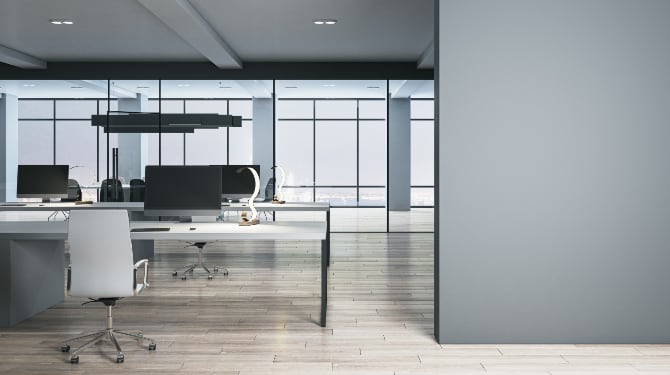
Painting your ceiling and walls the same color
While painting your walls and ceiling the same color is not always going to work, there are specific spaces where taking this approach will look quite appropriate. Some small spaces beg for the same color on the ceiling and wall, as do some large spaces. While many architecturally unique ceilings do not benefit from the monochromatic experience, there are times when vaulted and asymmetrical ceilings look great with the same paint color that adorns the walls. Let’s explore some of the spaces that look best when using the same paint color on walls and ceiling.
Painting the ceiling and walls the same color is ideal for the following types of spaces:
Small spaces
Small spaces almost always benefit from lighter paint colors, as this tends to open them up a bit and make them feel less cramped. However, you can choose a darker paint color for the ceiling and walls and achieve an extremely intimate feel. Will it feel closed in? Yes, but sometimes that’s the goal and it can be achieved with a darker tone on both. If you are looking for a more open feeling, choose a lighter color.
Large spaces
Larger rooms have more flexibility than smaller rooms in terms of design options. For example, you can choose to go with the same light or dark paint color on the walls and ceiling and then let your furniture and other decor be the focal point. The paint simply promotes a unifying feeling.
Asymmetrical, vaulted or angled ceilings
Vaulted, angled and asymmetrical ceilings, as long as the surface areas are flat, can sometimes be painted the same color as the walls. Again, use a darker shade for a more cozy feel and use a lighter shade to open up the room.
Healthcare and medical facilities spaces
White is often associated with cleanliness, which is why so many healthcare facilities choose white or light grays or blues. These facilities are almost always fairly basic in terms of architecture, which means there are fewer distractions from allowing these spaces to share the same color of ceiling and walls.
In most cases, the option to go with the same color on the ceiling and walls is simply a personal preference. If it looks good to you, go for it. Just make sure if your property is shared by others, whether it’s family, friends or if you’re in a commercial space, that you are making a decision that will benefit others as well.
Pros and cons of painting the ceiling the same color as the walls
While there are some general rules in regard to paint colors on ceilings and walls, you have many, many options available to you. That means you don’t have to choose white for the ceiling – to the contrary, you have so many options and some of which might be the same for the ceiling as the walls. But are there some pros and cons? Always.
Ceilings are often imperfect, which is why a flat white is chosen – to conceal imperfections. Unless your ceiling’s surface is near perfect, you are limited in terms of choosing a glossy finish, which is what you might want for your walls. We’ve got much more information here that will point out some other reasons you may or may not want to choose the same colors.
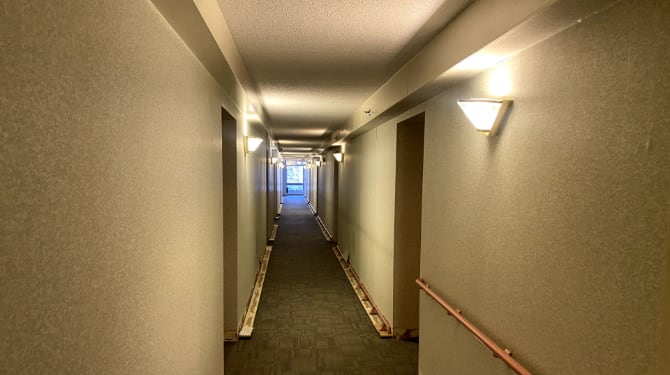
Pros of painting your ceiling and walls the same color
Looking to go bold? Painting the ceiling the same color as the walls is not the traditional option, which makes it a bold move, particularly if you’re choosing a darker shade. But in some spaces, you can go dark and achieve the right mood/feel. Let’s explore some of the pros of choosing the same color.
Ceilings appear higher
You can really open up a room with light colors, so if you want your ceilings to appear higher, choose the same light color for the walls. The concept is that when the colors are the same, the eye is drawn upward, thus creating a more open and higher illusion.
You probably can’t achieve this effect with dark colors though, as you need the natural light to create its most dramatic impact on the lighter color.
Create a seamless look
Have you heard of the ceiling referred to as the “fifth wall?” You can achieve an effect that unifying effect on the fifth wall when you choose the same color for the walls and the ceiling, as they blend seamlessly together. Whether it’s light, dark or something in the middle, let the room tell you what it needs.
Improve the “cozy” factor in large rooms
Large spaces can feel empty and sterile, particularly if there are sparse furnishings and the paint is bright. If the room receives abundant natural light, choose a dark ceiling and wall paint and make the space cozier.
Avoid color clash
It’s actually quite easy to make a decision on a color for the ceiling that differs from the color of the walls, and find out once it has dried that they clash. For example, you’ve chosen white for the ceiling and once it dries it has a pinkish hue to it that completely clashes with your wall color. Avoid this situation by choosing the same pigment for both.
Easy and fast results
The application of two or more colors requires prep work related to taping off borders, allowing paint to dry before moving onto another color, which includes an investment in time and money. Avoid these distractions by choosing the same color and you will get faster results with much more ease.
Reducing the cost of painting
From taking the time to let different color of paints dry before the next surface is painted (which costs in terms of labor) to buying different rollers for different colors, there are expenses related to projects that include different colors that you don’t have when the walls and ceilings share a color.
Cons of painting ceiling and walls the same color
It seems that with every pro there is a con. Such is the case with painting the ceiling the same color as the walls. The following are some of the most commonly discussed.
The space looks smaller
If you’ve decided on a darker color, make sure it’s not in a small space with little natural light, as this can make it look even smaller. This might be the effect you’re looking for in a large space, but if the size of a small room is already a problem, definitely choose a lighter shade of paint.
Bold colors can be overwhelming
Bold colors certainly have their benefits, but can be a bit overwhelming when you go with bold on the ceiling and the walls. To avoid making a room “pop” so much that it’s distracting, stay away from colors that cause sensory overload.
No to low contrast
From photography to interior design, contrast is almost always a good thing. Unfortunately, you lose contrast when you choose the same paint color for the walls and ceiling, which requires the use of other design elements (furnishings, artwork, etc.) to establish a focal point.
Imperfections are highlighted
Almost all surfaces have undulations and various other imperfections, which really pop out when the paint has anything other than a matte finish, and it’s especially true with ceilings. Unless your ceiling is near perfect, dark or glossy paint will really bring out the imperfections.
Take these pros and cons and weigh them against your preferences. Maybe you don’t mind a small space feeling a little more closed in with your favorite darker shade of paint. It all comes down to what you like, but just be sure you know what you’re getting into if you choose bold designs.
Tips for painting your walls and ceilings the same color
If you have been drawn to ceilings and walls the same color in the past, you’re probably considering it for some or one of the rooms in your upcoming painting project, but you also know it’s a bold move. Making the right decision on a paint color can be even more intimidating when the stakes are higher, so we’ve established some tips to help you through the process.

Without light, we don’t see the color, which is why you need to consider the amount of light, either natural or manmade, each of your spaces receives before you can nail down a color. For example, rooms with little natural light generally don’t benefit from darker colors, as they will look too closed in. Most people stay away from the cave motif, so consider a lighter shade for areas like these.
The amount of light a room receives will also influence the finish. You can mute an overly bright room with a matte finish, just as you can open up a darker room with a glossy finish (and lighter colors). But you also have to consider the imperfections on the surfaces.
Should the ceiling be lighter or darker than the walls?
When the decision is made to choose different colors for the ceiling and the walls, the first move is to find two that play off each other and add the appropriate amount of contrast. Next, you have to choose whether the ceiling or the walls will be brighter than the other. The traditional option is to go lighter on the ceiling. Something that has gained popularity in recent years is painting the ceiling darker than the walls, but should the ceiling be lighter or darker than the walls in your space(s)?
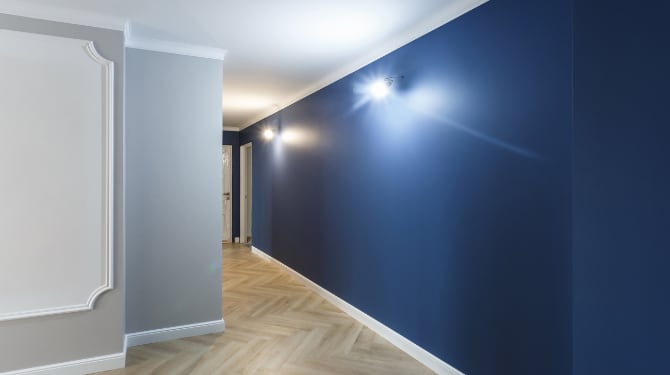
Painting your ceiling a lighter color than the walls
Unless your property is already big with spacious rooms and high ceilings, you’re probably going to lean toward making most of your spaces look as large as possible, which is what you gain when painting ceilings light than walls and is perfect for small rooms.
One of the benefits of choosing a lighter color for the ceiling is that they will seem higher, making the room seem more spacious. However, beware of high-ceiling rooms, because going with a lighter color on the ceiling will only make them seem higher, which will risk making the room too barren and stale.
As always, take into account the amount of light the room receives before making the decision to paint the ceiling lighter than the walls. Furthermore, look at the shade of your furniture in the room – if it is light colored, you can definitely choose a darker color for the walls while going with a traditional white on the ceiling.
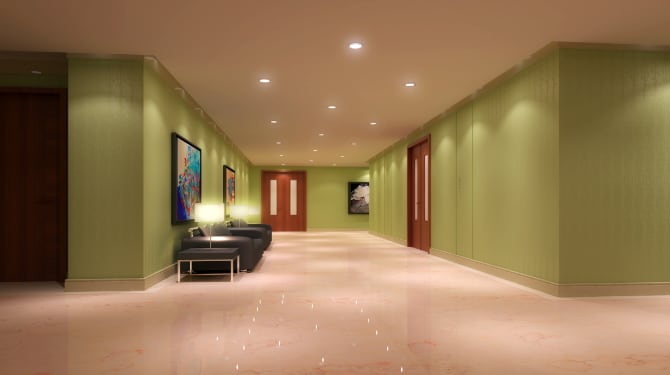
You may be well-suited to paint your ceiling a lighter color than the walls if:
You prefer the low contrast look
You will achieve a low-contrast appearance as long as the wall color is also light. This also provides a modern look that will brighten up a room.
You like simplicity and the classic look
Most people are seeking out the classic look when they paint the ceiling lighter than the walls. And for smaller rooms, it’s pretty much required, as a lighter ceiling will make the room appear larger.
You want the walls and ceiling to complement each other
It’s not uncommon for interior designers to enhance the look and feel of a room by choosing a color for the walls, then lightening it for use on the ceiling. This ensures the contrast remains low and that there will be no color disharmony.
Whether it’s personal preference or if you’re trying to achieve a specific goal, painting the ceiling a lighter color can be a smart move in the right situation.
Pros and cons of a light ceiling with darker walls
A light ceiling with darker walls is quite common throughout the country and in other parts of the world, but of course, there are pros and cons to this approach. Various shades of white are the most popular colors for ceilings. Aside from this being the traditional option, it has a function, too, as it will make the room look larger while adding plenty of contrast to the room. White ceilings can also provide a focal point if the walls are a darker color.
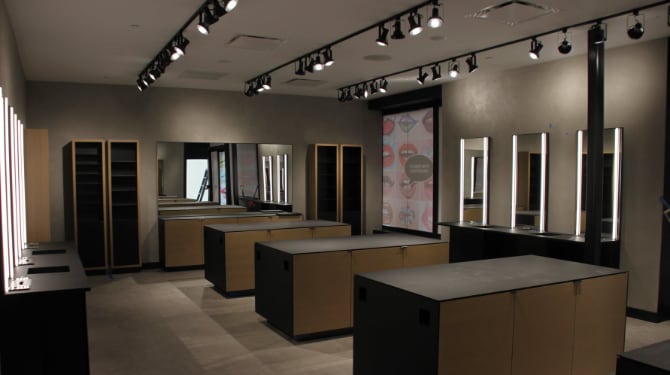
If you’re looking for a subtle change in tones and to bring some simplicity to the room, most certainly paint the ceiling white while choosing darker colors for the walls, but not too dark. For example, subtle change doesn’t occur with a white ceiling and dark brown walls. Rather, you could achieve subtlety and simplicity with walls painted a light beige, gray, green or blue. Furthermore, if you have chosen a color for the walls that you absolutely love, then simply lighten it for your ceiling.
There are also cons to painting ceilings lighter than walls. For example, if you want high contrast or you want to make a large room feel cozier – painting the ceiling a lighter color will not allow you to achieve these goals.
The examples of light ceiling and light walls combinations
You’ve probably already got an idea of the color combinations you want for your ceiling and walls, but we’ve provided some of the most popular colors trending as of late. Most people will have their interiors repainted every three to five years. Some are choosing the same colors as before, but others are keen to stay in the loop with what’s trending to keep their spaces looking up to date.
Here are some of the classics that seem to always stay in the good favor of homeowners, as well as some of the newer combinations:
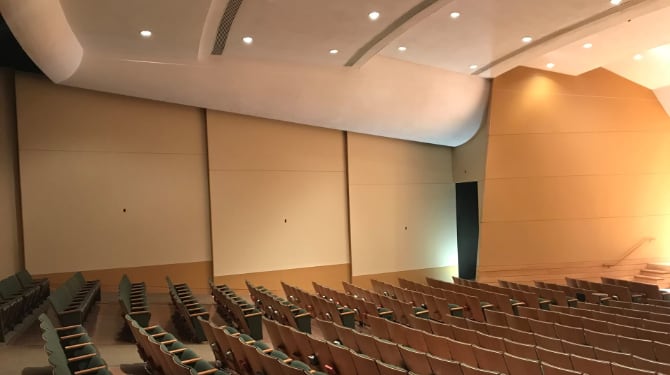
- White ceiling with light gray walls
- Light gray ceiling with warm beige walls
- Light green ceiling with light gray walls
- Sky blue ceiling with pale blue walls
The examples of light ceiling and dark walls combinations
There’s no better way to achieve high contrast in space than painting the walls dark and maintaining the classic light ceiling color. This can bring an air of sophistication to a space and provide a host of options for decorating with various elements, including furniture, fixtures and art. But the ceiling in this situation doesn’t have to be the classic white look. Rather, you can choose light shades of various hues that compliment the dark wall paint color.
As usual, these combinations evolve in popularity from one year to the next, but we’ve provided the following combination that seems to be hitting with people today:

- Light blue ceiling with dark blue walls
- Light brown ceiling with dark gray walls
- White ceiling with black walls
- Light gray ceiling with dark blue walls
There are times when making the decision about color combinations on ceilings and walls is as simple as knowing the purpose of the room. Other times, the choices will be made with the only consideration being the type of light the room receives. As always, personal preference plays a massive role. Come up with some possibilities of your own and use color swatches to see what works.
Painting your ceiling a darker color than the walls
Painting your ceiling a darker color than the walls is not a traditional choice, but that doesn’t mean it is a wrong choice – far from it. However, it’s not a combination that is going to work in every scenario. A ceiling darker than the walls is only going to work in a room that is of the right size, style and with the right type of light. Dark ceilings are generally considered a bold statement, but they are also used to highlight unique ceiling features/decorations.
The pinnacle of contrast would be a dark ceiling with white walls, which some might consider rather dramatic. These are also people who have fully embraced the concept of the ceiling as the fifth wall. If you want to achieve “lowering” the height of the ceiling, painting it darker than the walls will provide that allusion.
Be careful though, because you can turn a small space into a claustrophobic area really fast by painting the ceiling darker than the walls. For example, a narrow living room needs to be “opened up,” which is something only a lighter color of paint on the ceiling is going to achieve.
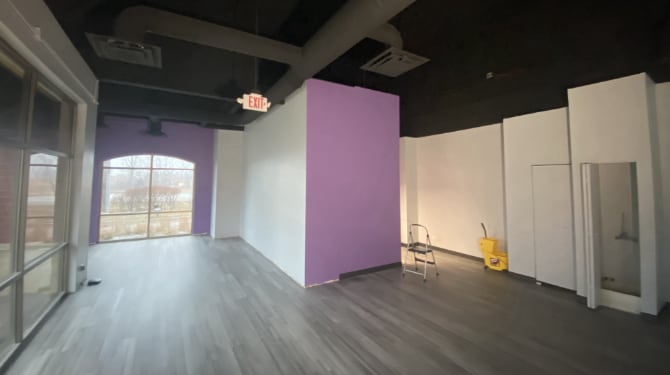
You may want to consider painting your ceiling a darker color if:
You desire a cozy atmosphere that is also intimate
A darker ceiling will essentially tighten up a room, making it more relaxed and cozy. The darker paint has a lowering effect on the ceiling, which is a fast way to bring more intimacy to the room.
You have crown molding or unique architecture on the ceiling
Make those unique areas on your ceiling pop with darker colors. It’s a contrast that helps you showcase these features and make your room unique.
You want maximum contrast
For those who want nothing to do with understated rooms, traditional looks or subtlety, choose white walls with a darker color on the ceiling. It’s a striking look that can provide an interesting focal point.
Pros and cons of a dark ceiling with light walls
You’ve probably seen plenty of examples of how a dark ceiling with light walls looks stunning, but just because it worked in those situations doesn’t mean it is going to be the same for your spaces. Yes, there are pros to dark ceiling light walls, but there are also cons.

The fact is that a dark ceiling can be quite impactful, completely transforming a room. For example, in rooms with tall ceilings, the dark paint makes them seem not so high. The dark ceiling also has an impact on the mood of a room, making it dramatic and cozy. But in the wrong situation, the dark ceiling can be too much, making a room too claustrophobic.
When you have a large space that seems rather cold and uninviting and you want to alter it into an intimate setting, painting the ceilings with a dark paint can do the job. However, if the room is already small and doesn’t receive much natural light, the opposite effect can occur, making the room zoom beyond intimate and closing it down to something more akin to a cave. This happens because dark colors make light recede rather than expand like light colors.
There are design elements that can be accentuated with dark ceiling paint. For example, you’ve got ornamental light fixtures hanging from the ceiling and you want them to blend in, yet also serve as a non-obtrusive focal point. The dark paint helps them to complement the space rather than take it over. This is especially true when the fixtures are gold or bronze.
Remember that painting a ceiling a darker color than the walls is considered a bold move for a reason, so only go this route when you know you can pull it off.
The examples of dark ceiling and light walls combinations
The dark ceiling vs. white walls debate has been around for a while now and it’s clear that there are no true winners or losers, because every situation is going to be different – what works in one space might not work in another. When the ceiling is darker than the walls, it’s usually a situation where the ceiling is higher than normal, but not always. And “dark” doesn’t always mean deep, rich hues of brown or even black – all that matters is the dark ceiling and light walls differ enough to be noticeable.
The following are some scenarios where the darker and bolder colors work with specific lighter colors:
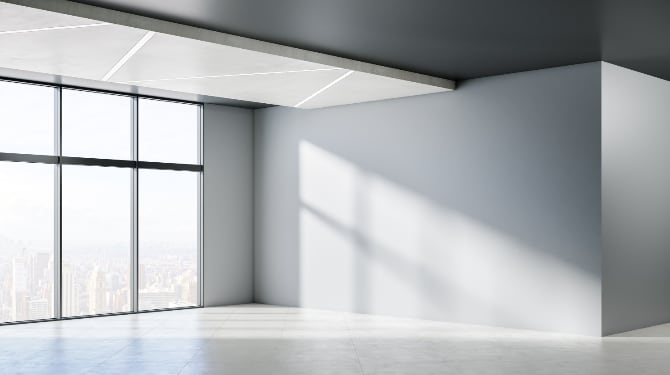
- Dark blue ceiling with white walls
- Dark green ceiling with white walls
- Dark gray ceiling with light gray walls
- Dark blue ceiling with light blue walls
Whether you’re a fan of green, blue, gray or black, there are many combinations out there that might work in your unique spaces. Talk to your contractor about getting real-life examples of how these colors might match your spaces.
Should you paint your ceiling white?
It’s perfectly normal to choose white for your ceiling paint, because the vast majority of spaces feature this color on the ceiling. It’s a safe choice in “normal” spaces, meaning they aren’t massive rooms or have oodles of distinctive architectural elements throughout. Why is light/white paint the most popular for ceilings? Most designers know that white will open up a room and add spaciousness to it too because white reflects light better than darker colors.
Ceilings are not perfect surfaces, which is another reason white is a popular option – white has the ability to hide imperfections. Furthermore, as most people tend to repaint their interiors every three to five years, white ceiling paint seems to be the easiest color to touch up or completely repaint.
When you’ve painted your ceiling white, you open yourself up to more versatility for wall paint colors. White works with everything. From a subtle variation in wall colors to more bold colors that provide tons of contrast, the white ceiling opens a world of possibilities.
The answer to “should you paint your ceiling white?” is almost always “yes.” The only time you need to reconsider is if you’re trying to “reduce” the size of a room or take the brightness factor down a few notches in a room that is glaring with light. Any other time it’s almost always a safe bet to go with white. Keep your options open and don’t be afraid to go bold, but remember that choosing white is rarely a mistake.

You may want to paint your ceiling white if:
Bright colors are the dominant hue in your space
Some refer to spaces that feature many bright colors as “busy,” which might be the intention. You want those colors to play off each other and you don’t want your “fifth wall” getting in the way, which is why you should choose white ceiling paint.
Your ceiling has many imperfections
Ceilings are far from imperfect and benefit from white’s ability to hide these imperfections, but if you’ve got a ceiling with texture to it, you definitely want to choose a flat white ceiling paint, as this will really hide those bumps and lumps. Don’t choose a dark color or a glossy finish, as these will enhance what you need to hide.
The space receives little to no natural light
Dark rooms feel claustrophobic. To combat the feeling of being in a cave, utilize white’s reflective properties on your ceiling. White paint will enhance that little light you get in these dark rooms and help to open it up.
Examples of white ceiling with walls in different color combinations
If you’ve made the choice to paint your ceiling(s) white, you’ve opened yourself up to a variety of color options for your walls, because white works with just about every color. With all of these choices, you might be feeling a bit overwhelmed as the pressure sets in as you try to make the right decision. Remember to consider what your room(s) are being used for, the amount of light they receive, the size of the room and the decorative elements you plan on adding, as these will help guide you to the right color for your walls.
Color preferences are almost always personal, which means what looks good to you is the most important thing to factor in.
If you aren’t 100 percent set on color and want some guidance, consider these currently popular combinations:
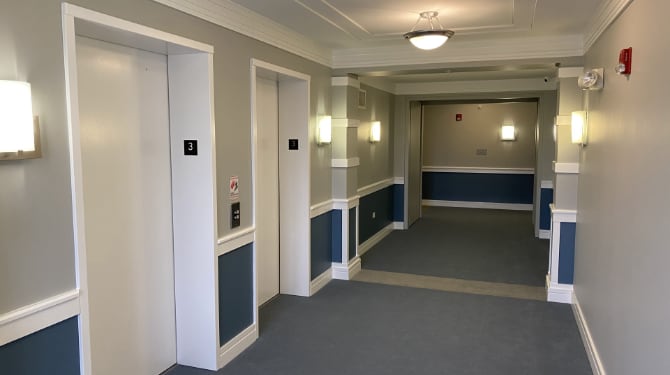
- White ceiling with white walls
- White ceiling with gray walls
- White ceiling with blue walls
- White ceiling with beige walls
- White ceiling with brown walls
- White ceiling with green walls
While colors can trend from one decade to the next, light variations of blue and gray are classics that seem to always make the list of trending colors, regardless of the decade. If you want more contrast in a room with white ceiling paint, choose darker colors for the walls. If you want a space to be airy and bright, choose lighter tones.
If you prefer gray, you’re probably a fan of the classy look that maintains some sleekness to the space. If blue is your preference, you’re choosing a calming hue that plays perfectly with a white ceiling. For an earthier tone, choose beige. But for a step up in the contrast department, go with brown.
White ceiling paint has been popular for many, many decades and it’s not going away any time soon. While it is a great option for a number of reasons, if you have an impeccable ceiling surface and want to paint your walls white, you can always branch out to other light colors for your ceiling to provide some contrast and a focal point. Talk it over with your contractor and you’ll make all the right decisions.
Best ceiling and wall color combinations for 2023
Year after year, white is the most popular color for ceilings throughout the country. But just because it’s the most commonly chosen color for the ceiling doesn’t mean you can’t go bold and choose a darker color. It all depends on the room and your personal preferences.

In the following paragraphs, we’ll talk about some of the most popular color combinations for 2023. You’ll see information about blues, grays, neutral tones, white and how different combinations of colors can impact the aesthetic of a room. Paint manufacturers are always coming up with different imaginative names for paint colors and 2023 is no different, but follow these tips for some of the top options on the market today:
White
We’ve said it before and we’ll say it again – white goes with everything. It adapts, it fits in, it helps other colors make a point. For example, if you’re looking for an earthy look, choose a white ceiling with light green (Eccentric Lime) walls. You can even play with the different shades of white on the ceiling, or switch it around and do a light color on the ceiling and a shade of white on the walls. Feel free to experiment with all the options.
Neutral tones
Light colors really appeal to minimalist, but that doesn’t mean you have to choose white. Rather, think light neutral tones that are understated, definitely minimalistic and yet classic at the same time. Neutral tones on the ceiling and also match neutral tones on the walls, offering low contrast and many options for letting the decor shine.
Blue
Blue is best known for its calming effects. For example, If you’ve got a rather complex and sophisticated space, level it out with a light blue color (Ocean Air) on the ceiling. Homeowners have flocked to blue for decades because it’s just difficult to use it incorrectly.
Gray
For people who are indecisive about paint color, the go-to hue is gray. This color works in many commercial environments because of its appeal to those who are trying to convey a feeling of professionalism, but it also works in residential spaces. Light gray (Vapor Trails) is a great ceiling color, as it can help to accentuate architectural features in a space while also taking the “temperature” down in a room.
Black
Black as a popular color? Yes, it’s true. Black, especially flat black, is huge in loft spaces that are too open and have structural elements that are best hidden, such as pipes, ducts and wiring. For a massive uptick in the contrast department, consider using black as the dominant color, then go with light colors on the trim and doors.
While the trends from year to year can help narrow down the color combination options for ceilings and walls, go with your gut and choose the colors that speak to you. Don’t be afraid to experiment and go bold, but there is nothing wrong with playing it safe – it’s up to you.
Choose experienced ceiling painters in the Chicago area
At Painters Inc., some of the most common questions we get are about paint colors. We have more and more customers considering something other than white for their fifth wall and fortunately, there are tons of options for them to consider. But we won’t leave you take on the burden alone – we’ve worked with many, many clients who have leaned on us for our experience and gained confidence from our recommendations. We know what works for specific spaces and we know what doesn’t work. But we also listen to our customers, because they have specific tastes that need to be catered to and their opinions matter the most.

We are professional ceiling painters who have offered residential and commercial ceiling painting services for going on 20 years. We do a thorough inspection of all spaces and surfaces prior to taking on a project and we can assist you in everything from choosing paints to choosing when to have the project started. Our consultations are free, but the value of the information we offer is priceless. Contact us and let’s talk about your next painting project.









